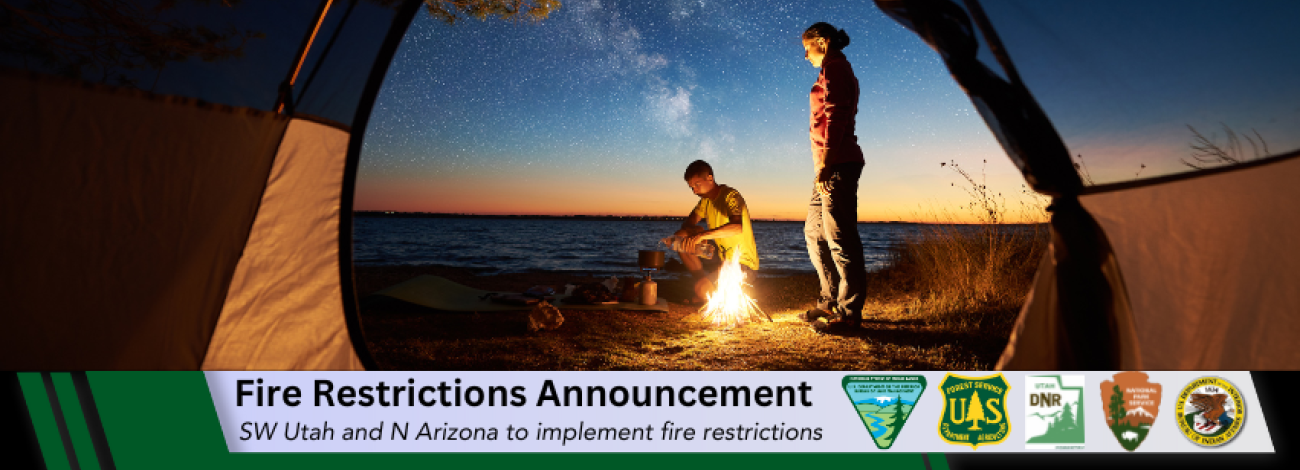Southwest Utah and northern Arizona to implement fire restrictions
ST. GEORGE, Utah - Due to rapidly increasing fire danger, interagency fire managers are implementing Stage 1 Fire Restrictions beginning June 21 at 12:01 a.m. on all federal, unincorporated Private, and State lands in Washington, Iron, Beaver, Kane and Garfield counties (excluding lands in Beaver and Garfield managed by the Fishlake National Forest), all Arizona State Lands north of the Grand Canyon, NPS lands within Grand Canyon-Parashant National Monument, and all BLM-managed public lands within the Arizona Strip District in Arizona. Incorporated cities and towns are not included. Please contact your local fire department or county fire warden for specific private land fire restrictions.
“Elevated fire danger conditions are present across much of southwest Utah. Hot and dry weather conditions are expected to continue into July,” said Southwest Utah Division of Forestry Fire and State Lands Fire Management Officer Dave Harmon. “Because of the higher-than-average spring precipitation, there is more grass on Utah’s landscapes. On windy days, wildfires have the potential to become larger because there’s more available fuel and spread faster through dry grasses.”
While Stage 1 Fire Restrictions are in effect, the following acts are prohibited:
• No campfires or open fires outside of agency improved and maintained campgrounds and homesites in southwest Utah. Running water is required on cabins or homesites on unincorporated private land. Devices fueled by liquid petroleum are allowed.
• No discharging of fireworks or other pyrotechnic devices outside of incorporated city limits or on public lands (city-specific restrictions may apply). Fireworks are always prohibited on all federal lands.
• No shooting of exploding targets or tracer ammunition.
• No cutting, grinding, or welding of metal in areas of dry vegetation. This includes acetylene torches.
• No use of equipment without a working and properly maintained spark arrestor (if required).
• No smoking near vegetation or outside of a developed recreation site, personal vehicle, or building.
• No open fires of any kind are allowed in Zion National Park’s Watchman Campground (Stage 2 Fire Restrictions).
• Campfires are allowed in agency improved and maintained campgrounds at Lava Point.
• Campfires are allowed at Glen Canyon in established campgrounds within established rings and below the high-water mark, only in areas completely void of vegetation.
Please be aware that fire restrictions will be slightly different among agencies and these restrictions do not apply to incorporated cities. Please check the specific fire restrictions with the respective land management agency before visiting.
Local, state, and federal fire officials urge Utahns to use their ‘Fire Sense’ to help prevent unwanted wildfires. ‘Fire Sense’ is an interagency fire awareness campaign that was implemented in 2021 to increase public knowledge on how to prevent wildland fires. For more information on preventing unwanted human caused wildfires, agency-specific restrictions, and reference maps, visit www.utahfiresense.org, www.utahfireinfo.gov and www.wildlandfire.az.gov or follow us on Twitter, @UtahWildfire.
-CCIFM-
The BLM manages more than 245 million acres of public land located primarily in 12 western states, including Alaska, on behalf of the American people. The BLM also administers 700 million acres of sub-surface mineral estate throughout the nation. Our mission is to sustain the health, diversity, and productivity of America’s public lands for the use and enjoyment of present and future generations.

